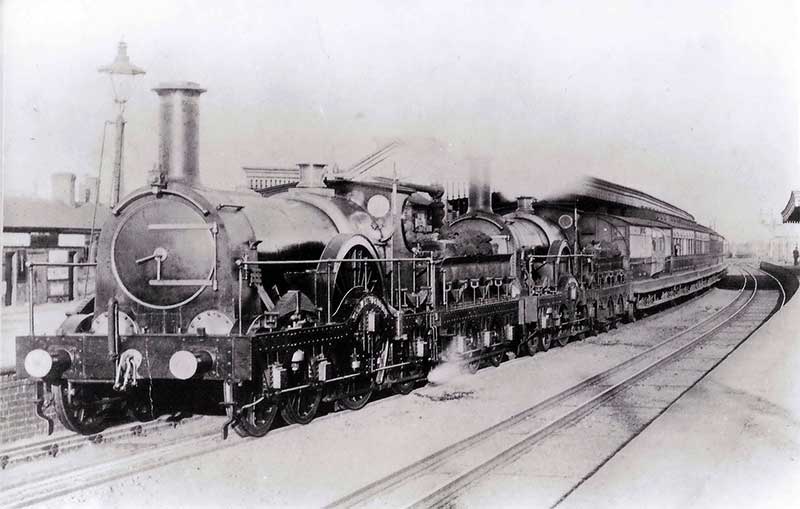Home » Support Us » The Great Western Society - The Great Western Society
The Great Western Society
Didcot Railway Centre is the home of the Great Western Society
The Great Western Society exists to preserve, restore and operate, as a permanent public exhibition and museum, locomotives, rolling stock, equipment machinery and relics of historical operational and general interest and educational value with particular reference to the former Great Western Railway and its successors following the nationalisation of the railways in 1948 and also to collect, make available for public reference and publish information concerning the history, equipment and operation of the former Great Western and other railways
(adapted from the Memorandum and Articles of Association)
Didcot Railway Centre has been set up to house and display our growing collection, which is thought to be the biggest collection of items relating to any one railway company, anywhere in the world.
The Great Western Railway
Isambard Kingdom Brunel designed his Great Western Railway to be the finest in the world. Its route through Didcot from Bristol to London was completed in 1841 and until 1892 its trains ran on Brunel's broad gauge tracks. The Great Western retained its independence until nationalisation in 1948 and is still regarded with affection by those who knew it.

One of the last Broad Gauge trains to pass through Didcot Station in 1892
The Great Western Railway was one of the most recognisable of the old private operators with its express trains to the holiday resorts in the West of England of chocolate and cream carriages being pulled by the famous Brunswick green locomotives. By contrast there were the lengthy coal trains from the South Wales valleys.
With nationalisation came the start of a ruthless re-structuring with branch line closures, signalling rationalisation and diesel locomotives replacing steam locomotives.
The Beginnings of the Great Western Society

The original Railway Modeller list
The history of the Great Western Society can really be said to have begun with the publication of this list in the April 1961 edition of Railway Modeller magazine. It lists 71 locomotives to be preserved, but only 10 from the GWR group - no 14xx, no Manor, no Hall.
The list was the catalyst that prompted four schoolboys to launch a fund to preserve a 14xx locomotive when Angus Davis said to his friends that if a 14xx was not to be preserved officially, they must try to buy one themselves.
The four friends; Angus Davis, Graham Perry, Jon Barlow and Mike Peart, decided to write a letter to the Railway Magazine to publicise their 14xx fund.

Jon Barlow's letter published in the August 1961 Railway Magazine
As Jon Barlow was the only one with a typewriter he wrote the letter. They posted it in April 1961, but it was several months before it was published, in the August 1961 edition of Railway Magazine.
The cost of launching the Society was a three penny stamp (1.25p in decimal coinage). The initial tiny investment has resulted in an organisation that 50 years later is responsible for assets in excess of £12 million.

The four 'schoolboys' reunited in 1986
l to r: Angus Davis, Graham Perry, Mike Peart and Jon Barlow
After the initial letter was published the society began to get established and an inaugural meeting was held at Southall Community Centre in May 1962. By this time it had changed its name to Great Western Preservation Society (shortened a year later to Great Western Society).
The Great Western Society is now a registered charity (Number 272616).
The Great Western Society at Didcot
As pressure mounted for more steam locomotives to be purchased before they disappeared, the Society was offered the use of the engine shed at Didcot that had become redundant.
The Society moved in with three locomotives and a number of carriages in 1967. Since then its members have transformed the area into Didcot Railway Centre. The range of activities and facilities is substantial and you can find out more about the Centre from exploring our web pages or by visiting the Centre!
Since the Society's arrival at Didcot we have learnt that the cost of restoration and maintenance grows as the trains get older. Our income generating activities are crucial to helping us continue this work, but the future development depends on the efforts of our members.
If you would like to help us in our work why not consider becoming a member, or make a donation to the Centre. Your contribution would be very welcome and put to good use.
However the Great Western Society is more than just Didcot Railway Centre. Although Didcot is considered to be the home of the Society there are also several active local groups supporting and enhancing the work of the Society.
Didcot Railway Centre Newsletter
Stay up to date with events and what's going on at Didcot Railway Centre.
You may unsubscribe at any time. We do not share your data with 3rd parties.